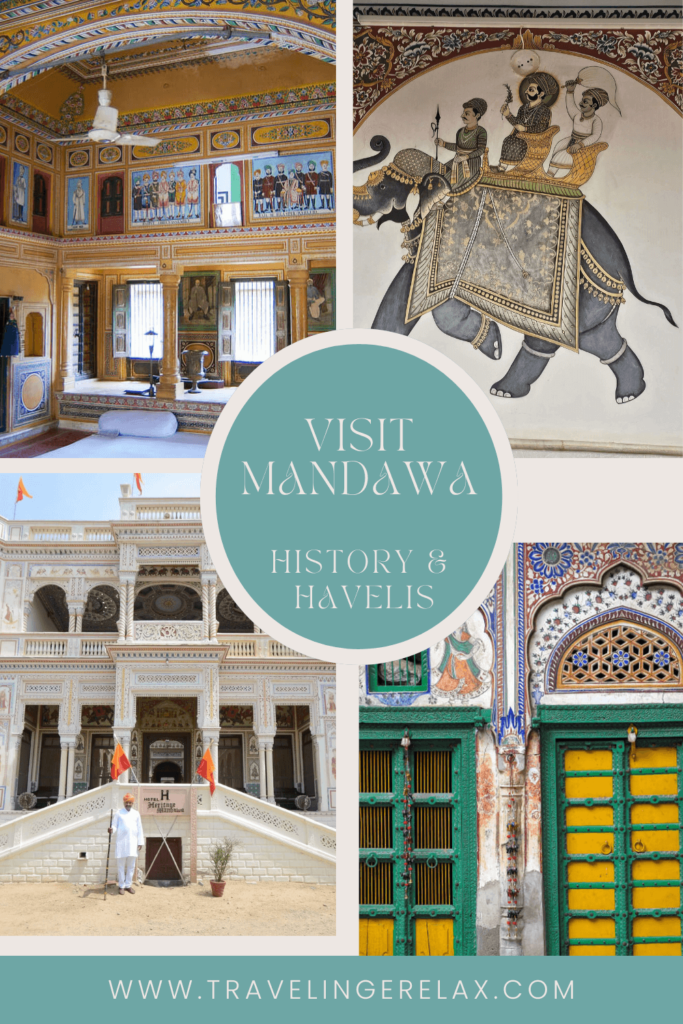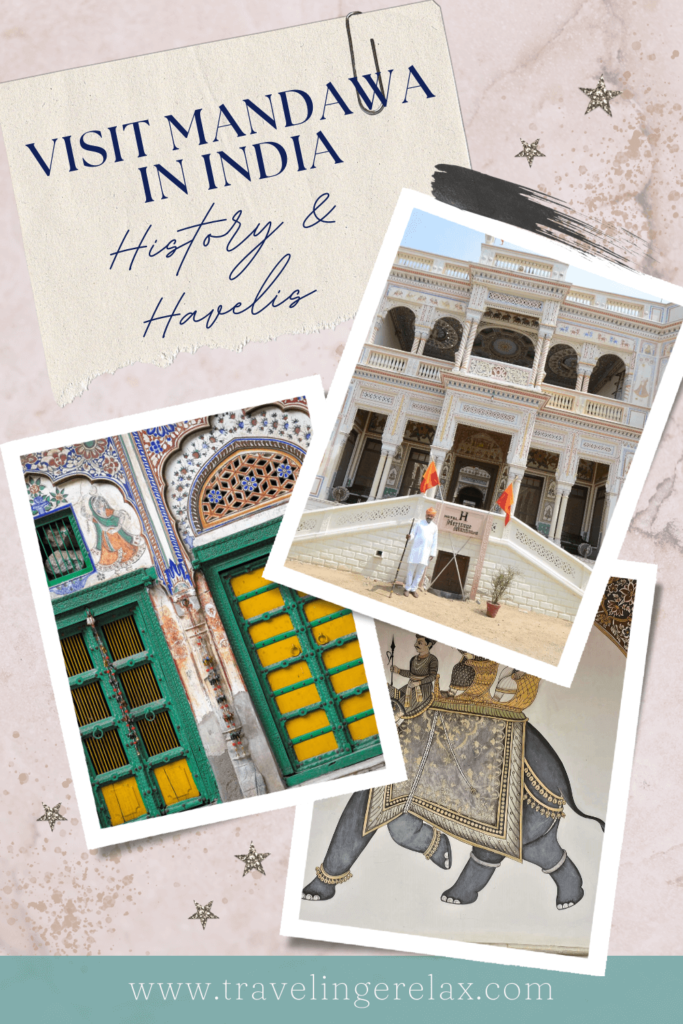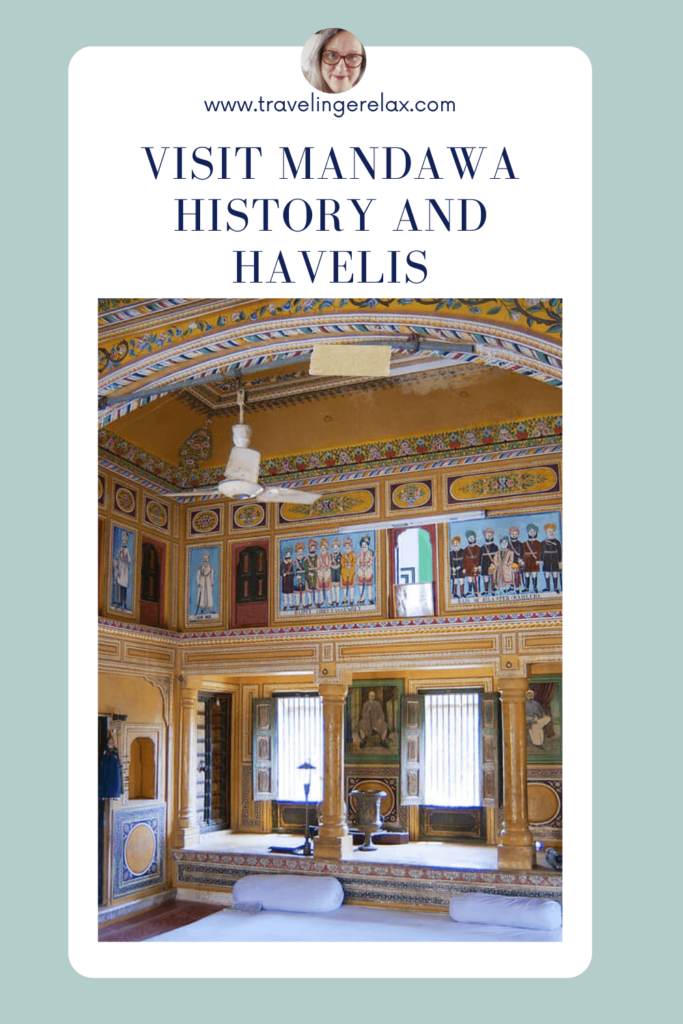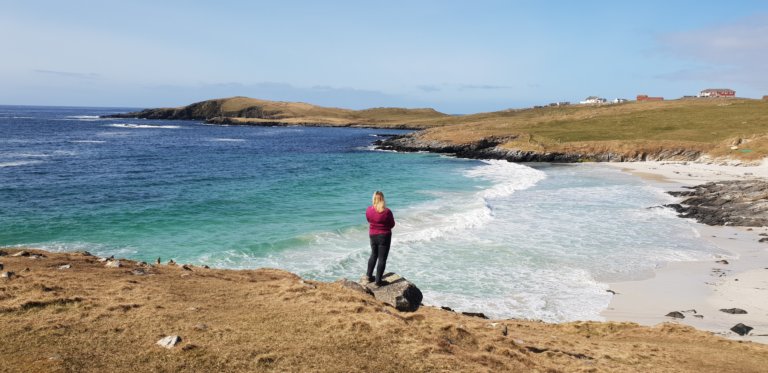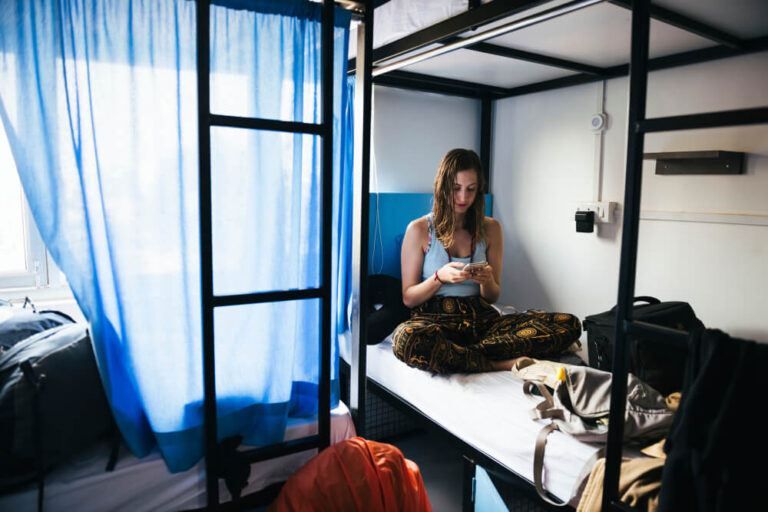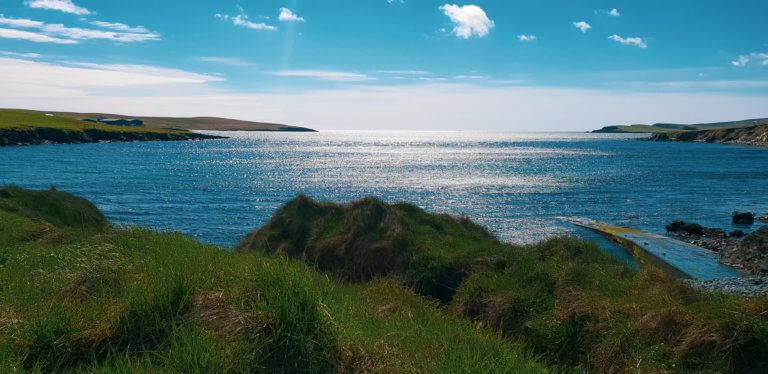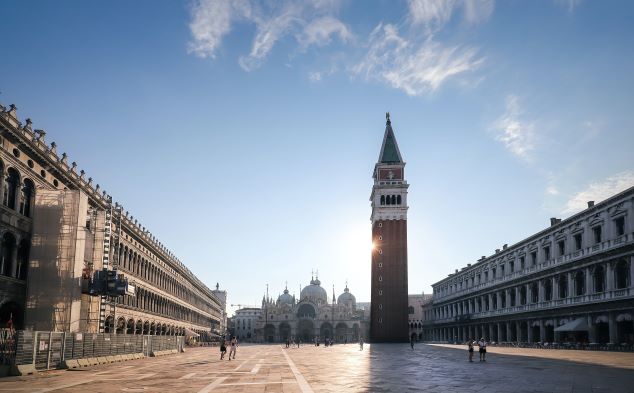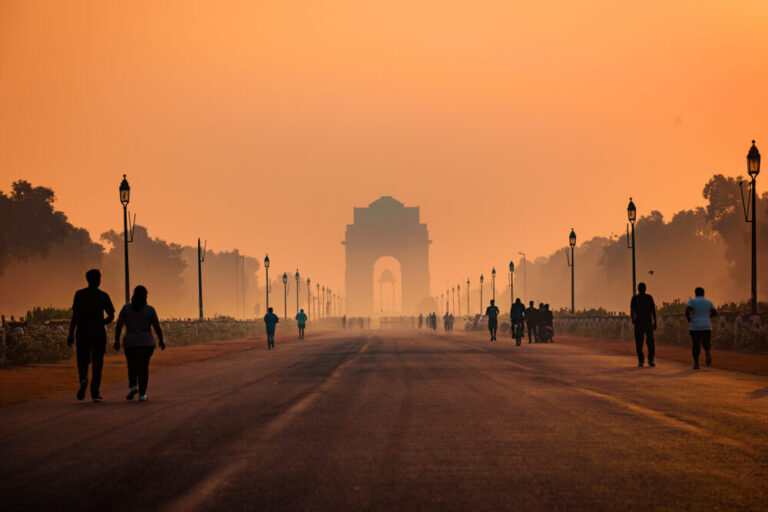Visit Mandawa for It’s History and Havelis
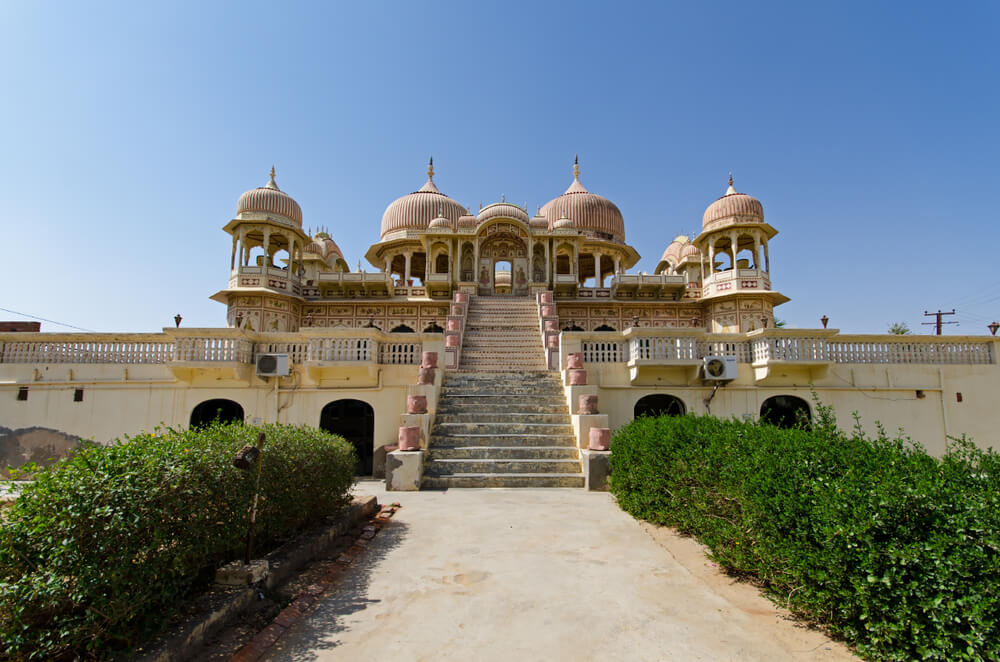
On a tour of Rajasthan, make sure you visit Mandawa, famous for it’s haveli painted buildings. Nestled in the heart of the Shekhawati region, and only a few hours from Bikaner, it is worth the effort to get here. Mandawa is renowned for its exquisite havelis adorned with vibrant frescoes that narrate tales of bygone eras.
Stepping into this picturesque town is like entering a living canvas where history and art seamlessly converge, there’s no surprise to hear it calls itself the largest outdoor museum in the world. Every turn you take on the streets of Mandawa weaves a tapestry of architectural interest; each haveli stands as a testament to the rich heritage and artistic prowess of the region.
I thoroughly enjoyed my journey through the winding lanes of Mandawa, learning how to unravel the stories etched on its painted buildings and offering a glimpse into the opulent past that continues to breathe life into the present.
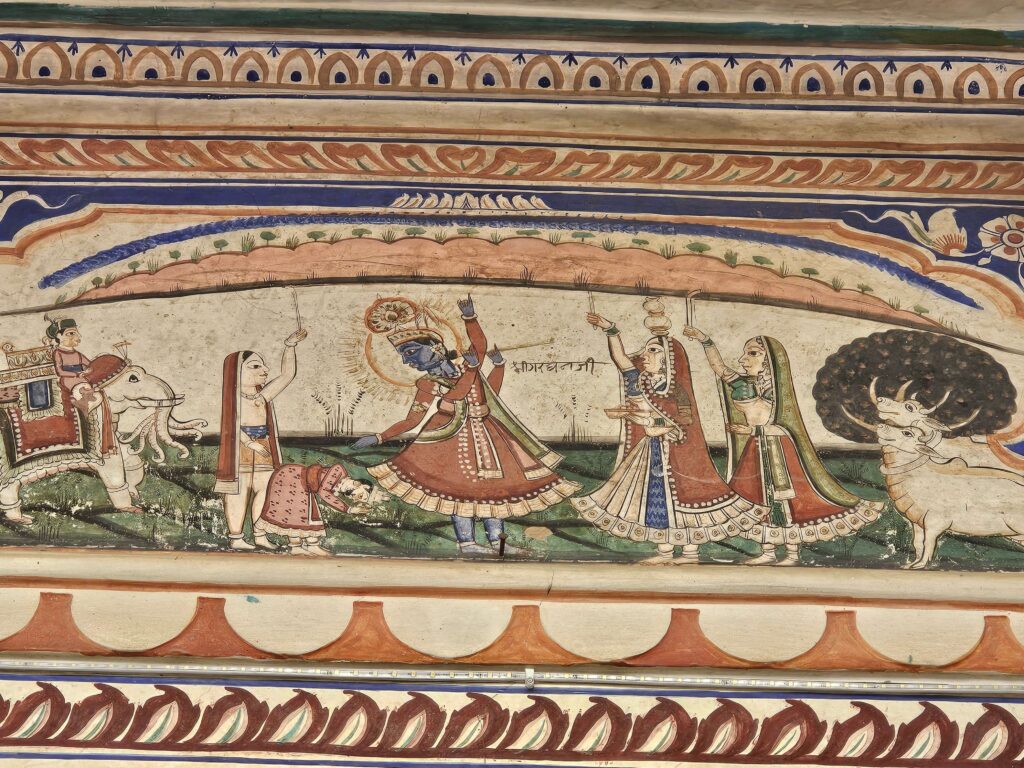
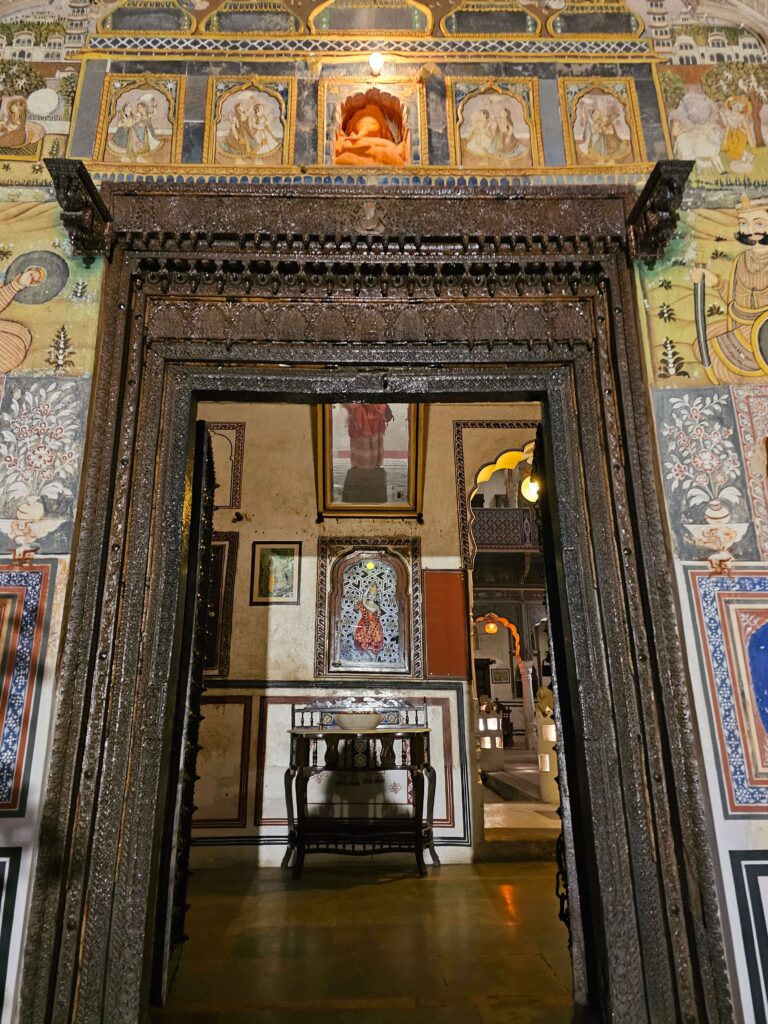
What is a Haveli Anyway?
Typically found in regions like Rajasthan, Gujarat, and Punjab, havelis are houses characterized by their intricate designs, expansive courtyards, and elaborately adorned facades. These grand structures often served as the homes of affluent merchants, nobles, or feudal lords, and they encapsulate the region’s rich cultural heritage. There would be a greeting room on the left, used for business transactions. Some had screened balconies, so the wives could listen in on the negotiations and, if necessary, pause the conversation, call her husband up and input her opinion on proceedings. Depending on the size of the Haveli, the family rooms would either be on the right, or hidden in another beyond this first courtyard.
With features such as delicately carved wooden doors, jharokhas (overhanging enclosed balconies), and mesmerizing frescoes, havelis stand as a testament to the architectural finesse and artistic prowess of their builders and of the time.
Beyond their aesthetic allure, havelis also serve as living history books, narrating tales of wealth, societal hierarchies, and the vibrant traditions that have shaped the cultural fabric of South Asia for centuries.
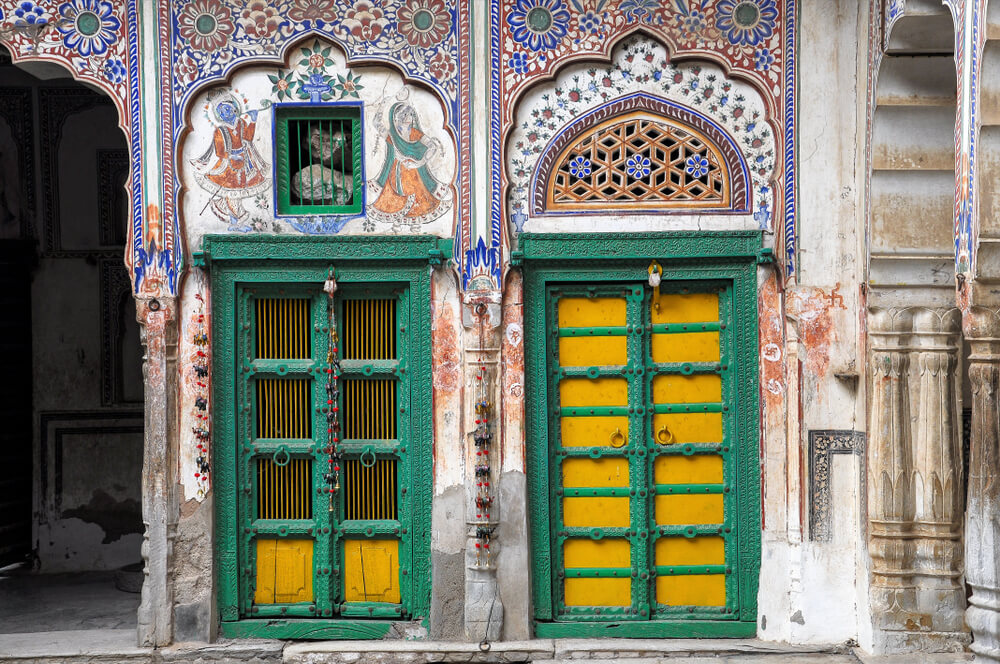
Why Visit Mandawa? Why is this area important?
The Silk Road, was a legendary network of interconnected trade routes that linked the East and West. It became a pivotal lifeline for Mandawa’s prosperity. This historic thoroughfare facilitated the exchange of not only silk, but a myriad of exotic goods, ideas, and cultures, weaving a rich tapestry that left an indelible mark on the town.
As caravans laden with silks, spices, and precious gems traversed the vast landscapes, Mandawa emerged as a flourishing oasis and trading point along this transcontinental highway. Goods from China to Afghanistan could be found in Mandawa.
The eclectic blend of influences from diverse corners of the world is vividly reflected in the town’s architecture, art, and traditions. In fact, the style of many of the frescoes was influenced by Moroccan buildings, visited by the traders.
It seems sad that the sandy lanes of the town are now so empty. As commerce moved onto use shipping, the silk road trade died and so did many of the towns along the route that relied on it for income. The businessmen and traders have moved with the trade and now often live in Mumbai or Kolkata. Unfortunately, some still own family havelis, but have no need for them and have let them fall into ruin.
Today, Mandawa stands as a living testament and museum to the profound impact of the Silk Road. It’s havelis echo the tales of a time when the town thrived as a crossroads of commerce, culture, and craftsmanship.

What are the paintings of?
Really interesting to me was that the artwork is not just of Hindu Gods and Godesses and the stories that are told about them, but there was also a lot of British imagery included too. There were quite a few paintings portraying the first train that came to the region, early versions of the motor car alongside elephants, camels and on one Haveli wall, the canals of Venice.
The variety in these images shows how the Indo-Islamic culture was …. Around 15% of residents in Mandawa are Muslim and the call to prayer echoes over the foggy early morning haze. With the highest percentage of residents being Hindu, followers of both religions live together in harmony in this small town.
There were many images of Hindu faith and the stories of Vishna, Ganesh and their wives and other incarnations. Elephants representing Maharajahs, Horses representing the warriors protecting them and camels.
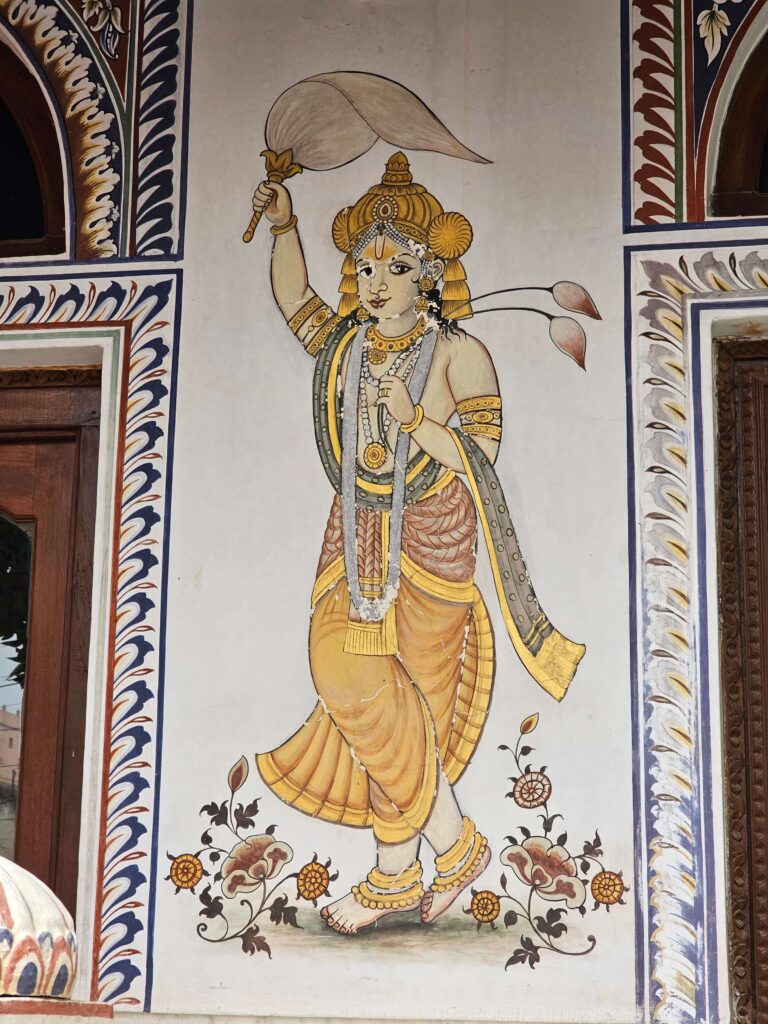
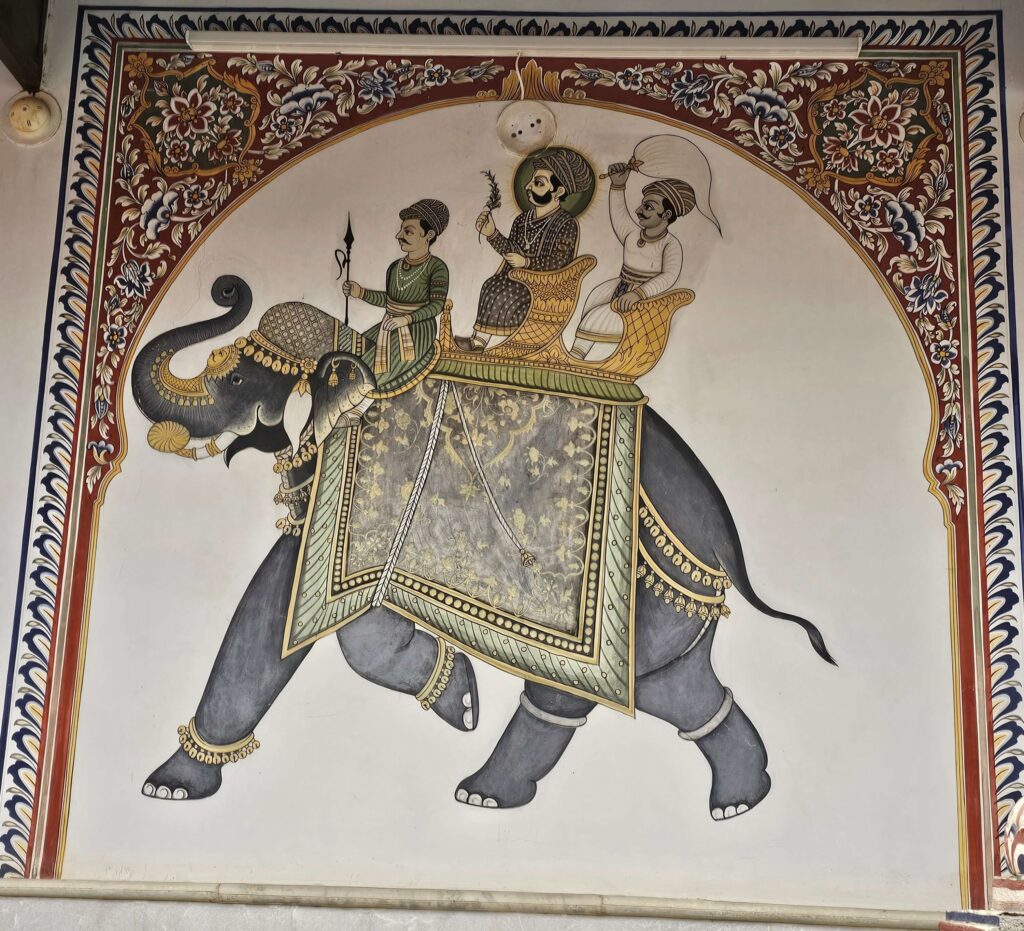
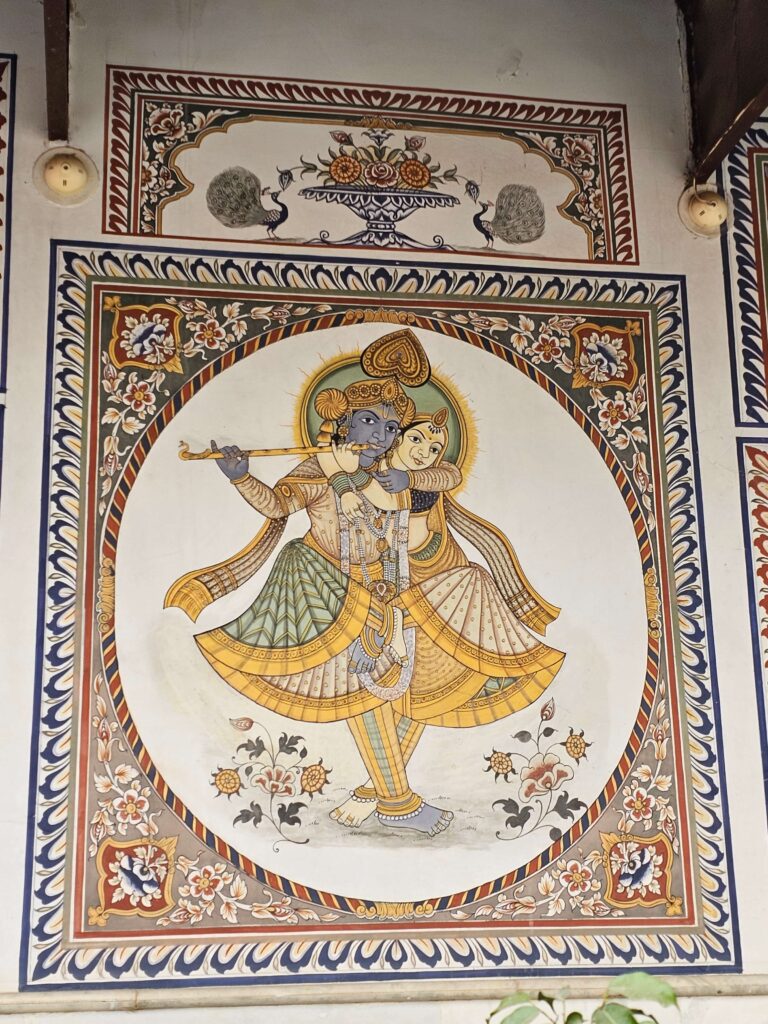
Frescoes and Paintings
The distinction between a fresco and a conventional painting lies in the method of application and the medium used. In the context of Mandawa’s havelis, the murals are predominantly frescoes, a technique where pigments are applied directly onto wet plaster. This process allows the colours to seep into the plaster as it dries, creating a durable and integral bond between the paint and the wall surface.
Unlike traditional paintings that sit on top of a canvas or, in this case, the plastered wall, frescoes become an integral part of the wall itself. This integration, coupled with the protective layer of plaster, significantly contributes to the longevity and resilience of the artwork. The porous nature of plaster also enables the frescoes to withstand the test of time, resisting fading and deterioration. As a result, the haveli frescoes in Mandawa have endured for centuries, maintaining their vibrancy and cultural significance, offering a remarkable testament to the durability of this ancient artistic technique.
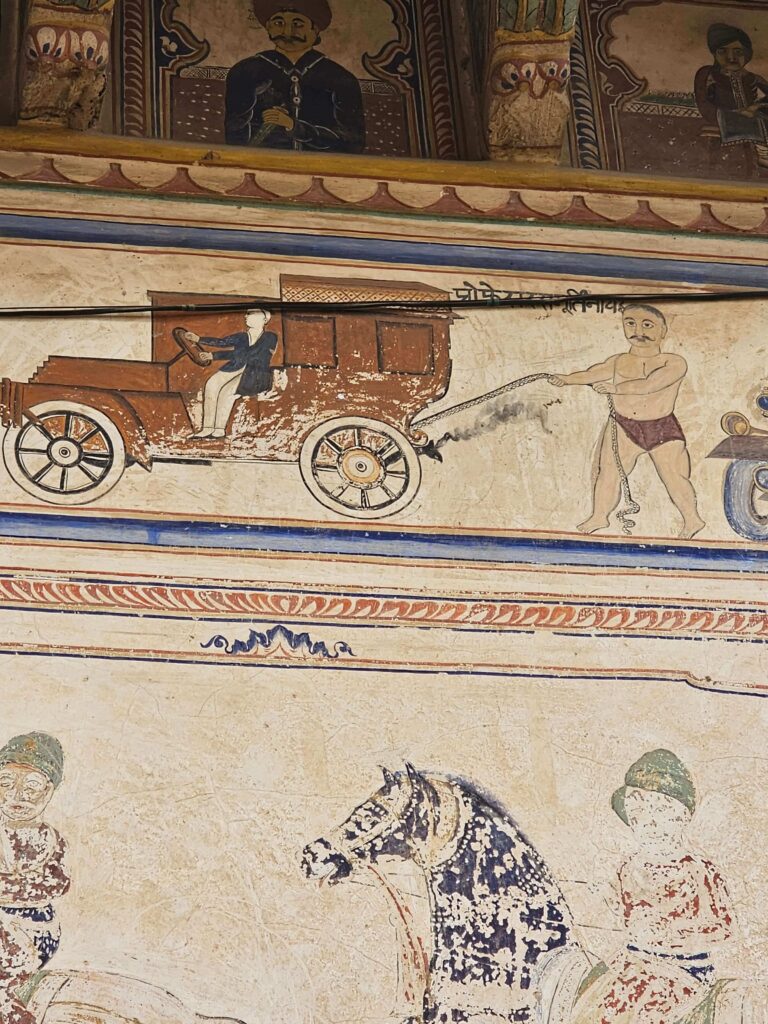

Do I Need a Guide when I Visit Mandawa?
You could quite easily and safely wander the streets of Mandawa, searching out the Havelis for yourself. You can expect to pay around 100 rupees for each Haveli you want to enter. However, a local guide is such a font of knowledge about the buildings history and families that owned them, in my opinion it is worth getting one. They also know the best examples of art and are able to take you to them, saving you time and getting lost – or maybe that’s just me!!
How to Travel to Mandawa
The easiest way to reach Manadawa is by hiring a car and driver. It’s about 5-6 hours drive from Delhi and about 3 hours from Bikaner. Expect to pay approx 5000 rupees from Delhi or 3000 from Bikaner. Your driver will stop at a rest place for you to take a toilet break and have a cup of tea of coffee, or lunch if you like.
In Conclusion to Visit Mandawa
I loved my stopover to visit Mandawa. It was so different to the large cities in Rajasthan, I felt very safe and the country girl in me enjoyed the respite from the noise and chaos of Delhi. I definitely recommend if you are travelling from Delhi to Jaisalmer, then choose a route that allows you the opportunity to stop here.
Want to read more about my adventures in India? Subscribe or check out these posts:
India Tour Day 1 Why Visit India?
A First Trip to India? Is India Safe for Women to Travel Solo?
Need some help planning or touring in India?
I recommend India for Beginners, who helped me put together my itinerary, booked my accommodations and organised a driver and guides in each city. I can’t recommend them enough
https://indiaforbeginners.com/
Like this post? Save it for later
